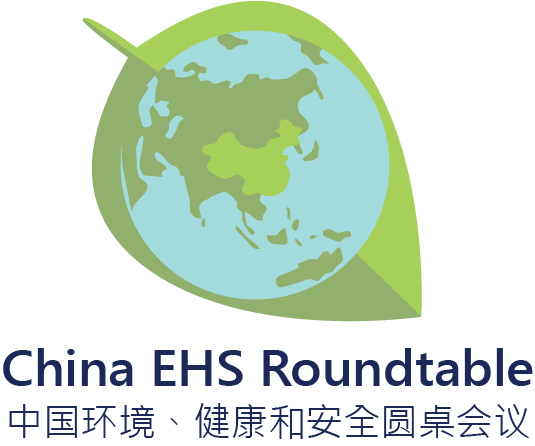China Proposes Regulatory Overhaul Targeting Environmental Risks from Chemicals
China is revamping its environmental regulations on chemicals to strengthen the environmental risk control and management of chemicals and tighten its regulatory requirements for chemical manufacturers, processors, users, importers, and exporters. Last week, the Ministry of Ecology and Environment (MEE) introduced new draft regulation on environmental risk assessment and control of chemical substances (see the draft regulation and the Drafters’ Explanations here). Comments on the proposed regulation are due by February 20, 2019.
The proposed regulation would establish an environmental risk control and management system for chemical substances. The proposed environmental risk control and management regulatory framework integrates, and expands on, China’s existing regulatory programs (i.e., new chemical substances registration program, toxic chemicals import/export program and specified regulatory requirements on prioritized control chemicals) on environmental risk control of chemical substances. Notably, the proposed regulation would authorize governmental authorities to promulgate use restrictions, material restrictions, or even bans on certain chemical substances in the future, and impose hefty penalties on violators.
Background
China does not yet have a framework law or regulation on the environmental risk management of chemical substances, despite some control manners exist in the individual regulations, such as on the new chemical registration (MEP Order 7), the chemical import-export control (SEPA [1994] No. 140), and the prioritized control chemicals (MEE, MIIT, NHFPC Announcement [2017] No. 83) respectively.
In its elaboration of the rationale behind the proposed regulation, MEE recognized the deficiencies of the current regulatory landscape, including that the government lacked a mandate or authorization in information collection, use restrictions, and other aspects of chemical risk management. MEE aspired to create an “environmental risk assessment and control system for chemical substances” based on the principles of “management by categorization, precautionary control at the sources, regulation in a comprehensive manner, and promotion of public transparency.” The regulation would “reasonably assign regulatory power, with respective accountability,” to multiple governmental authorities, and place a particular focus on the chemicals with “severe hazards or persistent presence in the environment.”
Key Components in the Proposed Regulation
The proposed regulation would have three key components:
- Environmental risk assessments for existing chemicals.
- Environmental risk control of prioritized control chemicals.
- Environmental management of new chemical substances.
Environmental Risk Assessments for Existing Chemicals
The proposed regulation envisions environmental risks assessment of chemicals to include basic chemical information reporting, environmental risk screening and environmental presence of chemicals investigation, monitoring, and risk assessment. The relevant environmental authority will take the primary responsibility to establish and administer this assessment system and is empowered to draft technical specification, procedures, and measures for environmental risks and create and complete basic database for environmental risk assessment for a chemical substance.
Further, the proposed assessment system imposes some new obligations on chemical manufacturers, processors or users, and importers:
- Annually, companies must report to MEE the “names, uses, quantities, and other information relating to the chemical substances manufactured, processed or used, and imported in the previous year” (Article 13).
- For certain chemicals designated for “prioritized assessments” following the chemical risk screening process, companies must also include the information relating to the discharges, the environment surrounding the facility site, the chemical and physicochemical characteristics, and the health and ecological toxicology data in the report (Article 14).
- Companies may be required to carry out hazard characteristic testing if the government believes that the information is insufficient for the environmental risk assessment of a chemical substance (Article 14).
Environmental Risk Control of Prioritized Control Chemicals
This concept of prioritized control chemicals was initially introduced in 2017 in the first batch of Catalogue of Prioritized Chemicals, but now it has been expansively developed in this proposed regulation. The chemical substances, based on environmental risk assessments, that “may present unreasonable risks to the ecology and environment or human health, and require the implementation of risk control” (Article 17) would be considered as prioritized control chemicals and may be regulated by “one or several measures” (Article 18). The leading efforts from MEE may include:
- To classify those chemicals as “toxic or hazardous pollutants,” and directly regulate the chemicals through China’s air, water, marine environment, or soil pollution statutes.
- To require “harmless uses or treatment” of solid waste containing prioritized control chemicals.
- To require mandatory clean production audits.
- To require registration in case of chemical use changes.
In addition, other ministries may impose use restrictions for the chemicals whereas the State Administration of Market Regulation may impose material restrictions in products.
Manufacturers, importers, or processors or users of prioritized control must annually publicize on an MEE online platform certain information relating to these risk-controlled chemicals, such as the names, quantities, uses, discharge, waste generation and disposal, and implementation status of risk control measures. Companies are also required to notify their downstream customers of the risk control requirements (Article 22).
Prioritized control chemicals can be designated further as “strictly restricted chemical substances” or “banned chemical substances.”
Strictly restricted chemicals (Article 19) would refer to those chemicals for which the risks from “a significant majority of” their uses cannot be effectively controlled despite the implementation of the above control measures. Only specific uses would then be allowed for such chemicals. Furthermore, strictly restricted chemical substances would be subject to an import and export licensing control system, which would incorporate the existing chemical import and export control program.
Banned chemicals (Article 20) would refer to those chemicals for which the risks from (presumably all) their uses cannot be effectively regulated despite the application of the above control measures. In addition, persistent, bioaccumulative, and toxic, or equally hazardous, new substances would also be banned after the government denies an application for new chemical registration, as discussed below. Manufacturing, processing or using, and importing or exporting banned chemicals would be prohibited.
All three lists (of prioritized control, strictly restricted, and banned chemicals) should also include chemical substances covered under several international treaties, such as the Rotterdam, Stockholm, and Minamata Conventions (Article 44).
Management of New Chemical Substances
The proposed regulation would largely incorporate the existing new chemical substances regulatory program as laid out in MEP Order 7, with certain changes. Notably, under the proposed rule, new chemical substances that simultaneously have persistent, bioaccumulative, and toxic characteristics, or equally hazardous characteristics, could be directly designated as “banned chemical substances.” (Article 24) In addition, when listing any new chemical registrations with restricted use conditions into “Inventory of Chemical Substances in China” (currently known as Inventory of Existing Chemical Substances in China or IECSC), such restricted use conditions should be clearly defined. (Articles 25 and 26).
Liability
The proposed regulation would cast a wide net and impose liability on a variety of stakeholders, including regulated companies, testing laboratories, risk assessment experts, and environmental regulators. Specifically, chemical manufacturers, processors or users, and importers or exporters in violation might face heavy administrative, civil, and criminal penalties:
- Most violations of the ban or restriction provisions could trigger corrective actions, adverse credit records, monetary penalties ranging from 500,000 to 2,000,000 Chinese Yuan, and/or even criminal penalties (Articles 34 and 36).
- Most data reporting, testing, or registration violations could trigger corrective actions, adverse credit records, and monetary penalties ranging from 100,000 to 500,000 Chinese Yuan (Article 37).
- Most information publication or downstream notification violations could trigger corrective actions, adverse credit records, and monetary penalties ranging from 20,000 to 100,000 Chinese Yuan Article 38).
- Companies may in addition face penalties under the existing air, water, soil, solid waste, or cleaner production environmental statutes if they violate the Article 18 risk control requirements that reference these statutes (Article 35).
- Companies may also face tort actions, as well as public interest litigation, for the consequential personal, property, and social interest damages resulting from environmental pollution in the course of manufacturing, processing or using, and importing or exporting of chemical substances (Article 39 and 40).
Conclusion
This proposed regulation could be important in three aspects:
- It would be a major overhaul that weaves into a holistic system China’s current discrete chemical-related environmental regulations, such as the new chemical substance registration, toxic chemical import or export control, and prioritized control chemical programs.
- It would go beyond these existing programs and provide impactful regulatory basis and enforcement authority to governmental agencies, including on those chemicals already existing in commerce. Certain control measures, such as use restrictions, material restrictions, or bans, would implicate substantive legal obligations and marketing and operational restrictions for companies handling chemicals in China.
- It would provide heightened and stiff penalties for violations.
The deadline for submission of comments is February 20, 2019. Given its comprehensive and potentially meaningful impacts on the commercial activities in China involving chemicals, stakeholders would be encouraged to submit the comments on time and closely monitor the development of this proposal.










